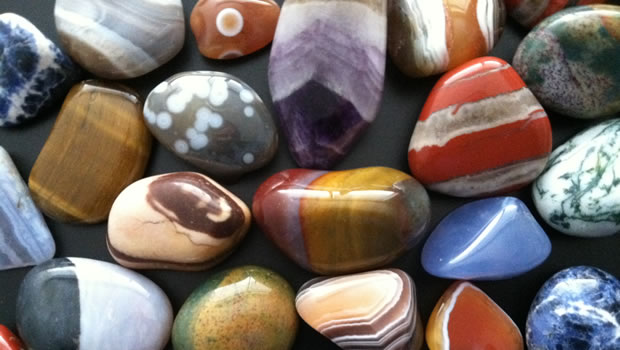Precious stones and semi-precious stones – Names and meaning
We could also name them as precious and semi-precious gems; the two terminologies are valid.
As we know, the human being, since its inception, has always been devoted and endowed with a certain mysticism to precious stones or foreign stones or very difficult to find in nature, conferring different uses: for ornamentation, as symbol of power and exclusivity associated with the worship of certain deities and even using them to heal or to the contrary.
Gemstones and semi-precious stones are almost mostly minerals; some of them, however, are organic (such as amber, fossilized plant resin).
Gems
To distinguish between precious stones and semiprecious stones are used three factors:
- The hardness scale them (which ensures its durability), which also traditionally coincides with stones or precious gems for excellence (the hardest gemstone diamond there is, as we have seen in previous articles).
- The rarity, scarcity or difficult to find in nature.
- Its beauty and perfection. When we speak of the beauty and perfection of a stone, either precious or semiprecious, we refer to the color, brightness, transparency and purity. A gemstone pure, flawless and radiant color can have a value even higher than a diamond of similar characteristics.
The only three stones or precious gems besides the diamond-considered by the above factors are the ruby, the emerald and sapphire blue.
Decades ago, it was also considered as an amethyst gemstone, but after the discovery of huge deposits in Brazil became part of the group of semi-precious stones, not being so scarce and rare.
RUBY
Its name comes from the Latin rubber, meaning red. Its main feature is the intense and bright red its name suggests. This color is due to its component metals, iron and chromium. It belongs to the family of corundum-just the sapphire and has a hardness of 9 on the Mohs scale. It is the hardest stone after diamond.
When extracted from nature, the ruby has a sparse and rough looking, but once selected which are to be used in jewelry after being carved and adopt this exclusive radiant tone that makes them so majestic. Please note that only between 1% and 5% of the rubies from nature are selected for use in jewelry.
Learn more details about this stone, like emerald and sapphire blue, deserves its own article.
EMERALD
Its name comes from the Persian; its meaning is “green stone”.
The emerald has always been highly valued because, even though there were other green stones, was the only crystalline emerald. Today, we know other green crystal stones, but none of them is comparable in color and transparency to the emerald.
Only thirty percent of emeralds mined in mines are carved for marketing in jewelry, and of these only two percent of them are no inclusions visible to the naked eye. Hence, its rarity and high value market price.
Know more facts and trivia on the emerald in the article that will devote special.
BLUE SAPPHIRE
Like the ruby, belongs to the family of corundum. Its distinguishing feature is its deep blue color; although there are other shades of sapphires, the most valued and appreciated is blue sapphire. Any color other than alumina red is called sapphire; hence it should be named adjective and blue sapphire.
As ruby, blue sapphire has a hardness of 9 on the Mohs scale. Its rarity is increasing daily, as many of the deposits of sapphires are exhausted today, and discover that they cannot meet demand.
Exclusively devote an article to this gemstone.

